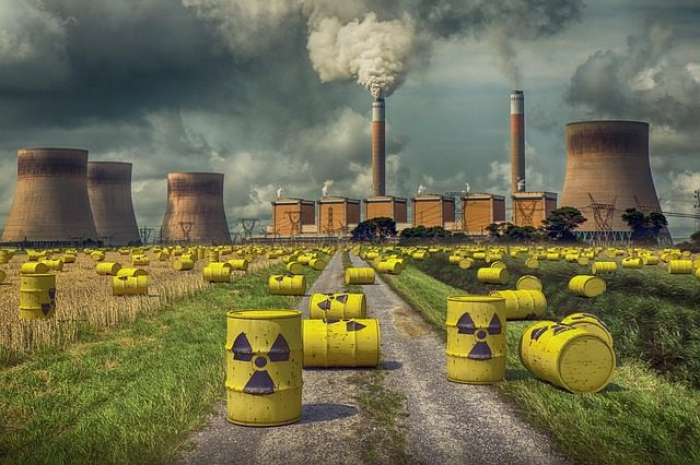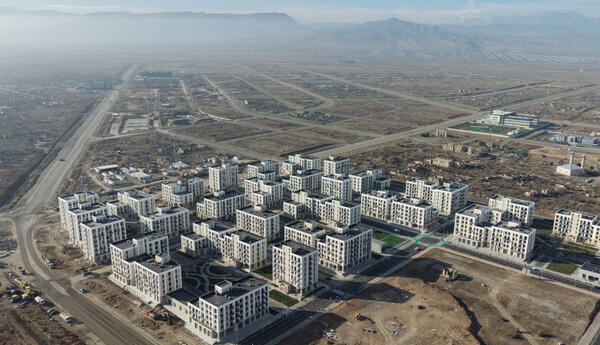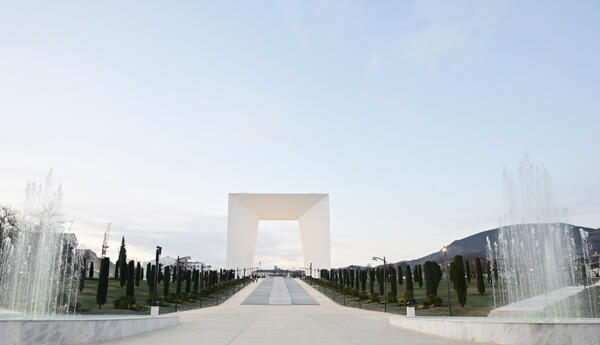How does Armenia threaten South Caucasus region with its revenge plan against Azerbaijan?
Following Azerbaijan's great victory in the Second Nagorno-Karabakh war, some Armenians, who are unable to accept the defeat, brought up nuclear weapons as a form of potential retaliation.
These discussions, however, ignore the fact that Armenia does host nuclear power on its soil but in the form of a decaying Soviet nuclear reactor – a ticking bomb that is not only a threat to Armenia itself but its neighbors as well. However, today Armenian are looking for possible ways to make a "dirty bomb" from the radioactive waste from the nuclear power plant. Even, the MPs discuss this 'revenge plan' in the parliament.
The Metsamor NPP is situated on an active seismic fault; the site of a devastating earthquake killed more than 50,000 people in 1988. Armenia signed a Partnership and Cooperation Agreement (PCA) with the European Commission promising to shut down Metsamor by 2004. Nevertheless, the plant was in extremely poor condition that made its operation unsecure and dangerous. The decision to restart the operation of the NPP led to the fears of another Chernobyl as it suffered from the same deficiencies in all early Soviet-designed reactors such as poor management, insufficient fire control, outdated computers, lax training, bad construction and not containment structure to prevent catastrophic release of radiation in the likely event of an accident.
In addition to its ageing technology, Metsamor, high in the mountains, lacks suitable water resources to use as reactor core coolant in the event that an earthquake damaged the facility, while Armenia’s parlous fiscal situation means that its government lacks financial resources to address the consequences of a possible accident.
Metsamor is one less than a half dozen remaining nuclear reactors of its kind that were built without primary containment structures.
Last year, Armenian officials said that they planned to extend the operating lifetime of the Metsamor nuclear power plant until 2026 but it could continue to remain operational until 2036 after modernization.
The waste generated by nuclear power remains dangerous for many years--so we must make wise decisions about how to handle and dispose of it. However, Armenians want to use them against Azerbaijan without considering that their plan would definitely affect the whole region.
Dangers of Nuclear Waste disposal
Usually, when nuclear waste is disposed of, it is put into storage containers made of steel that is then placed inside a further cylinder made of concrete. These protective layers prevent the radiation from getting outside and harming the atmosphere or generally surroundings of the nuclear waste. It is a relatively easy and inexpensive method of containing very hazardous materials and actually does not need special transportation or to be stored in a particularly special place, for instance. However, there are a number of dangers that surround nuclear waste disposal.
1. Long Half Life: The products of nuclear fission have long half lives, which means that they will continue to be radioactive – and therefore hazardous- for many thousands of years. This means that, if anything were to happen to the waste cylinders in which nuclear waste is stored, this material can be extremely volatile and dangerous for many years to come. Since hazardous nuclear waste is often not sent off to special locations to be stored, this means that it is relatively easy to find, and if anyone with ill intent were to look for nuclear waste to serve unpleasant purposes, they may well be able to find some and use it.
2. Storage: Another problem with nuclear waste disposal that is still being discussed today is the issue of storage. Many different storage methods have been discussed throughout history, with very few being implemented because of the problematic nature of storing such hazardous material that will remain radioactive for thousands of years. Amongst the suggestions that were considered as above ground storage, ejection into space, ocean disposal and disposal into ice sheets.
Of these, only one was implemented – ocean disposal was actually used by thirteen different countries and was the method of dumping radioactive waste into the oceans in order to get rid of it. Understandably, this practice is no longer implemented.
3. Affects on Nature: One of the biggest concerns that the world has with the disposal of nuclear waste is the affect the hazardous materials could have on animals and plant life. Although most of the time the waste is well sealed inside huge drums of steel and concrete, sometimes accidents can happen and leaks can occur. Nuclear waste can have drastically bad effects on life, causing cancerous growths, for instance, or causing genetic problems for many generations of animal and plants. Not disposing of nuclear waste properly can therefore have huge environmental impacts that can harm many millions of animals and hundreds of animal species.
Effects of Nuclear Waste Disposal
If disposed of properly, nuclear waste disposal need not have any negative effects. Instead, nuclear waste can lie in its storage place for many thousands of years until it is no longer radioactive and dangerous without being disturbed. However, if the nuclear waste is improperly disposed of or if the disposal methods are compromised, there can be serious consequences and effects of nuclear waste disposal.
1. Accidents: Although most of the time a lot of emphasis is placed on the safe disposal of nuclear waste, accidents do occur. Throughout history there have unfortunately been a number of examples of times where radioactive material was not disposed of in the proper ways. This has resulted in a number of disastrous situations, including nuclear waste being spread by dust storms into areas that were populated by humans and animals and contaminated of water, whether ponds, rivers or even the sea. These accidents can have disastrous knock on effects for the animals that reside in or around these areas or that rely on the water of lakes or ponds to survive.
Drinking water can become contaminated, too, which is absolutely disastrous for locals and residents close to the epicenter of the disaster. Even if nuclear waste just seeps into the ground, it can eventually get into reservoirs and other water sources and, from there, can reach the homes of people who unwittingly drink high radioactive material. There are examples of these sorts of accidents from all over the world and from all time periods, with severe accidents happening very rarely but having a huge effect on very many people.
2. Scavenging: A particularly bad problem in developing nations, people often go scavenging for abandoned nuclear waste that is still radioactive. In some countries there is a market for these sorts of scavenged goods, which means that people will willingly expose themselves to dangerous levels of radiation in order to make money. Unfortunately, however, radioactive materials can be highly volatile and cause a number of problems.
Usually, people who scavenge these sorts of materials will end up in hospital and may even die of problems related to or caused by the radioactive materials. Unfortunately, once someone has been exposed to nuclear waste, they can then expose other people who have not opted to go scavenging for nuclear waste to radioactive materials.
3. Transportation: Transporting nuclear waste from power plants can occasionally result in problems. If poor shipping casks are used for the containment of radioactive material, for instance, then a slight knock or bump or even crash could cause the contents to spill and affect a wide radius. Despite all the cautions that are put into place when transporting nuclear waste, accidents still occur and can have a devastating effect on all those in the vicinity of the crash.
4. Health Effects: The biggest concern is the negative effects that can have on the human body when exposed to radiation. Long term effects to radiation can even cause cancer. It is interesting to know that we are exposed to radiations naturally by living our lives that comes from the ground below us. Radiation can cause changes in ‘DNA’ that ensures cell repair.
5. Expense: If one of these accidents does occur, the cost of cleaning everything up and making everything safe once again for people, animals and plants is very high. There is no simple or easy route when trying to clean up spilled radioactive material: instead, it can take years to ensure that an area is safe to live in or even to visit once again. In the case of very serious accidents, it may take many tens of years until things start growing or living normally once again.
Some parts of this article can be found on conserve-energy-future.com.
Bütün xəbərlər Facebook səhifəmizdə








.jpg)
















.jpg)




 USD
USD
 EUR
EUR GBP
GBP RUB
RUB